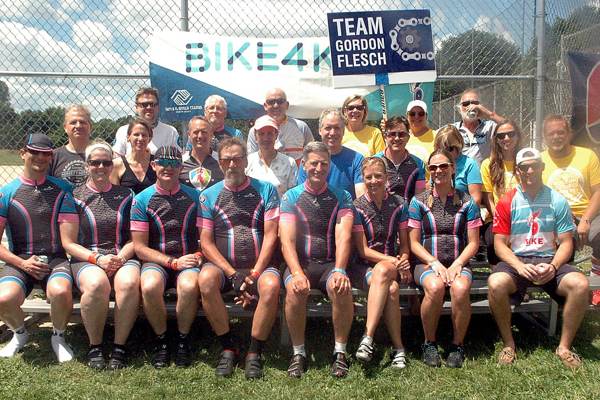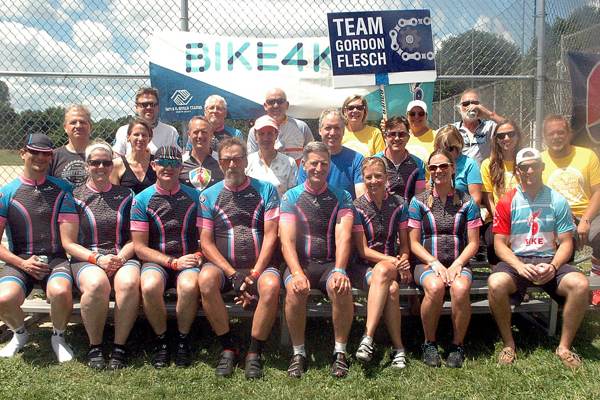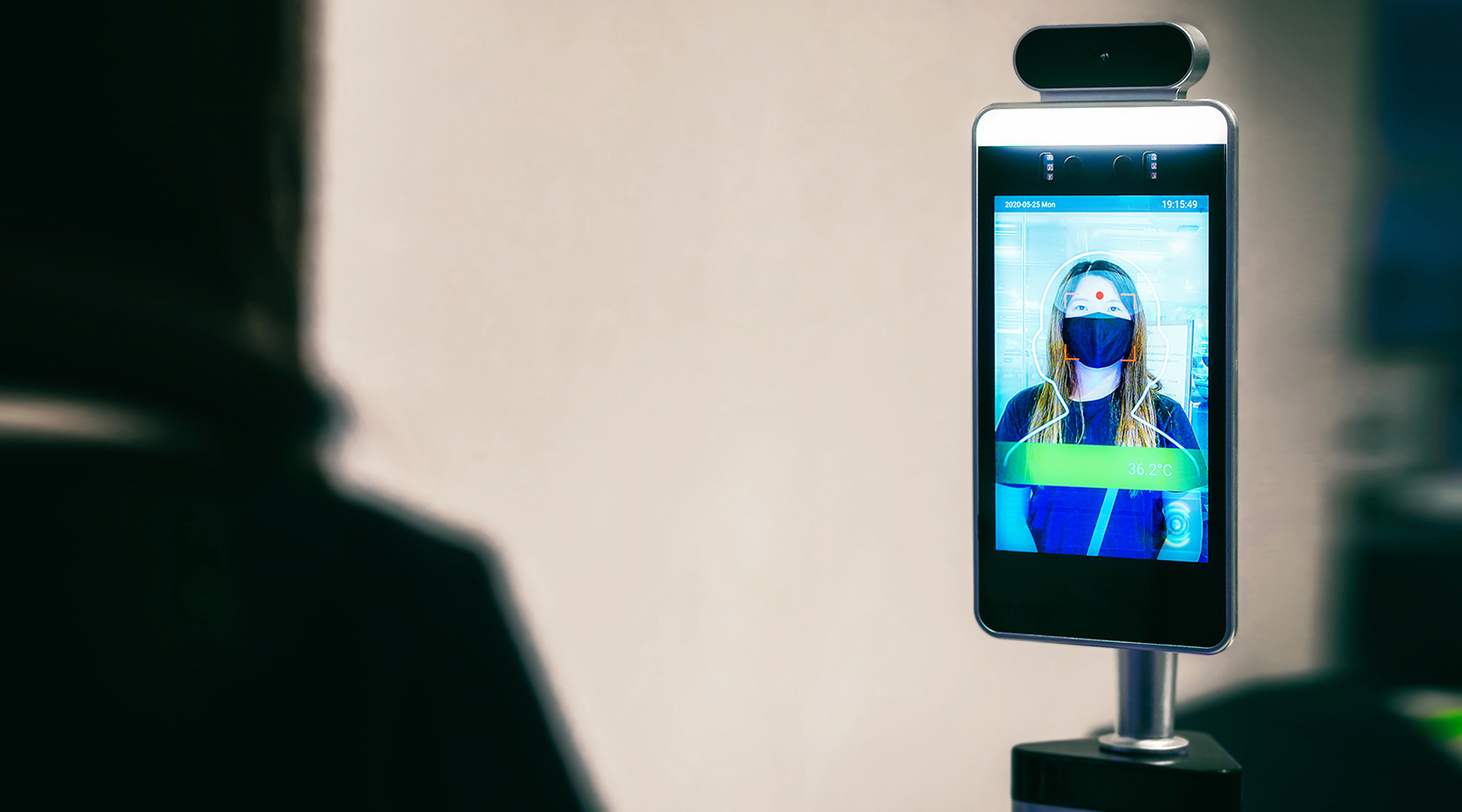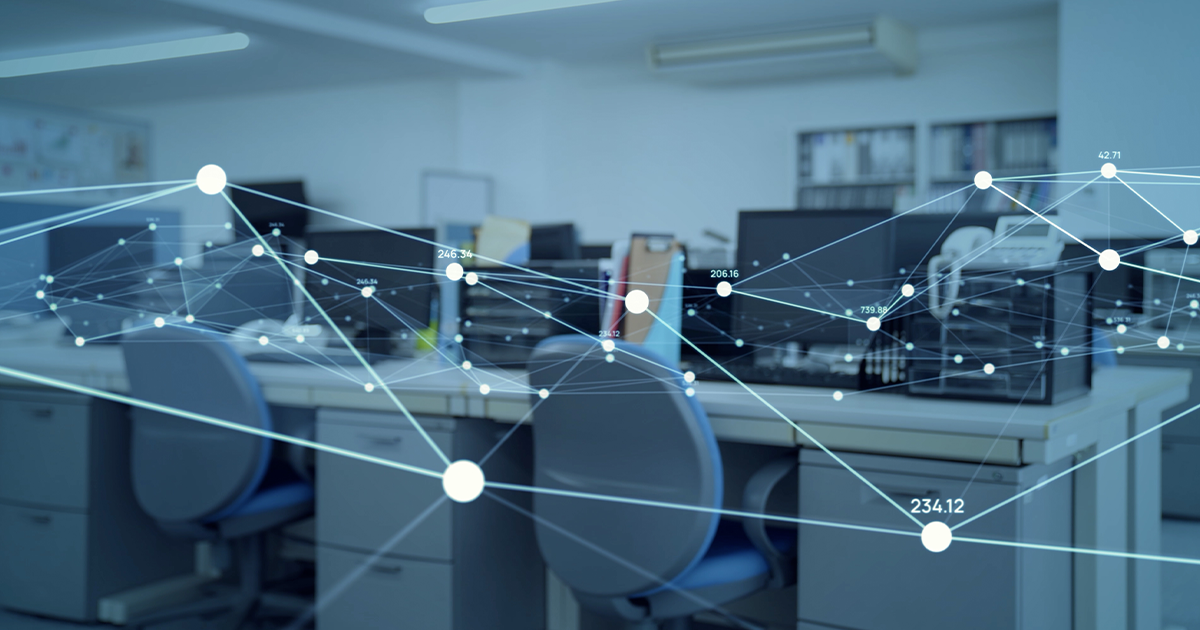Trevor Hope is the Director of Technology at Northbrook School District 27. During the 2020 COVID-19 pandemic the district opened the school year with a hybrid schedule to protect the health of students and staff. To make the program work, the primary and middle schools in Northbrook, Illinois needed a way to quickly check temperatures of up to 600 staff and students entering the school buildings every day.
GFC installed 19 temperature kiosks which get used every morning, with some in use all day. Once a student takes their temperature and it is normal, then they scan their student ID at a computer as a part of self-certification process and then join their classes. “I’ve been pleasantly surprised at how smooth everything has been,” says Hope. “We made a few adjustments, but since GFC installed the kiosks, we’ve been able to keep arrival at school running as close to normal as possible.”
THE ANSWER IS…
There is no one accepted model for safely reopening schools and businesses during the COVID-19 pandemic. How your organization does it will vary based on a variety of factors. This can include the number of people that enter a physical location, the age and health of those people and the limitations of a building and its entrances.
We should note that temperature screening kiosks are not a foolproof tool for stopping the spread of illness. The virus does not always induce a fever, and temperature screening is just the first step in any screening program. Schools and other institutions that have opted to reopen have implemented a variety of precautionary measures to ensure the health and safety of their students, teachers, support staff, and administrators moving forward.
There are a number of temperature screening solutions available on the market today, from traditional at-home tests to contactless hand-held devices. Automated temperature kiosks were created to take people’s body temperatures with zero contact involved. The kiosk will recognize a face, read the body temperature, store the data, and show the results within seconds. All a person has to do is stand in front of it.
Thermal imaging systems and non-contact infrared thermometers, which are non-contact temperature assessment devices, may be used to measure a person's temperature. An elevated temperature is one way to identify a person who may have a COVID-19 infection, although an infected person may be contagious without an elevated temperature or other easily detectable symptoms.
Normal temperatures will read around 98.6ºF, while a moderate fever is 100.4ºF. People will approach the kiosk and results will be displayed in a few seconds. If a person has a normal body temperature, the kiosk will display the words “entry” in green to ensure they are safe to enter the workplace.
The cost of handheld temperature devices ranges anywhere from $30–$100, but requires someone to physically take the temperature. This increases their exposure as well as everyone else. An automated and contactless temperature scanner can be used for most businesses, and range between $2,500–$5,000. The biggest difference typically comes down to how accurately and consistently it reads temperatures, and the additional functionality it brings.
CHOOSING HOW TO SCREEN
Every temperature screening intake process will be different. For example, the machines in use at Northbrook School District have capabilities a school does not need, like the ability to automatically lock doors and track data, which the school does not enable for safety and privacy reasons. However, businesses can set the machines to automatically lock doors if an elevated temperature is detected. It is also possible to enable tracking and data analytic tools to enable contact tracing and other programs to protect the health of customers, visitors and staff.
There are many choices to make when reopening a business of school. For example, many schools and businesses opt to have staff manually take temperatures with a hand-held non-contact Infrared thermometer. Of course, that means you have enough staff to operate these tools and that they are protected with adequate Personally Protective Equipment (PPE). For schools like Northbrook, that would be too cumbersome and slow. Using automated kiosks means staff can wait on the periphery and only step in when there is a problem or possibly a positive temperature reading that needs to be addressed.
As businesses in the United States and around the world are re-opening after the onset of COVID-19, offices need to decide everything from the number of staff to accommodate or whether to open the lunchroom. Of course, there is no virus-proof office and elevated temperature is just one potential risk factor. It takes a combination of temperature monitoring, personal protective equipment and contact tracing to make any business safer, and even then, infections can happen. For more information about screening, visit the CDC website.
No matter how your business is operating, you need the right technology to keep things running. Contact the managed technology experts at the Gordon Flesch Company about any of these solutions and more.










